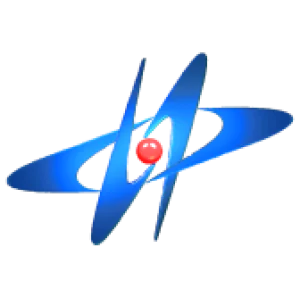Rapid Communications in Mass Spectrometry, volume 28, issue 14, pages 1580-1590
Electron attachment to some naphthoquinone derivatives: long-lived molecular anion formation
Asfandiarov Nail' L.
1, 2
,
Pshenichnyuk Stanislav A.
1, 3
,
Vorob’ev A. S.
1
,
Nafikova E.P.
1
,
Elkin Y N
4
,
Pelageev D N
4
,
Koltsova E A
4
,
Modelli A.
5, 6
Publication type: Journal Article
Publication date: 2014-05-29
Quartile SCImago
Q3
Quartile WOS
Q3
Impact factor: 2
ISSN: 09514198, 10970231
DOI:
10.1002/rcm.6934
Organic Chemistry
Spectroscopy
Analytical Chemistry
Abstract
Electron Affinity (EA) is one of the fundamental properties of a molecule. EA values can be measured with various experimental methods, although their availability is still relatively limited. We make an attempt to use Dissociative Electron Attachment Spectroscopy (DEAS) data for evaluation of the EAs of twelve naphthoquinone (NQ) derivatives.Naphthoquinone (NQ) and eleven of its hydroxyl derivatives were investigated by means of DEAS. A combined investigation of NQ and juglone by means of the Electron Transmission Spectroscopy (ETS) and DEAS techniques, with the support of density functional theory (DFT) calculations, allowed us to elucidate the empty-level structures of NQ and its hydroxyl derivatives.All molecules under investigation form extremely long-lived molecular anions associated with three resonant states (except for NQ, where only two long-lived resonances were observed). The hydroxyl substituents of NQ cause an increase in EA and number of internal degrees of freedom (N), and, as a result, an increase in the mean electron autodetachment lifetimes of the molecular negative ions (NIs). Evaluation of the EAs from the measured lifetimes of the molecular NIs through a simple Arrhenius approximation gives results in reasonable agreement with those obtained with DFT calculations.NI lifetime measurements by means of a modified DEAS instrumentation can provide quantitative data of EA. A simple Arrhenius approximation seems to be adequate to describe the process of electron detachment from molecular anions.
Citations by journals
|
2
4
6
8
10
|
|
|
Journal of Chemical Physics

|

Journal of Chemical Physics
10 publications, 27.03%
|
|
Journal of Physical Chemistry A

|

Journal of Physical Chemistry A
3 publications, 8.11%
|
|
Physical Chemistry Chemical Physics

|

Physical Chemistry Chemical Physics
3 publications, 8.11%
|
|
Russian Journal of Physical Chemistry A

|

Russian Journal of Physical Chemistry A
3 publications, 8.11%
|
|
Journal of Electron Spectroscopy and Related Phenomena

|

Journal of Electron Spectroscopy and Related Phenomena
2 publications, 5.41%
|
|
Rapid Communications in Mass Spectrometry

|

Rapid Communications in Mass Spectrometry
2 publications, 5.41%
|
|
Technical Physics

|

Technical Physics
2 publications, 5.41%
|
|
Physics-Uspekhi

|

Physics-Uspekhi
1 publication, 2.7%
|
|
International Journal of Molecular Sciences

|

International Journal of Molecular Sciences
1 publication, 2.7%
|
|
Russian Chemical Bulletin

|

Russian Chemical Bulletin
1 publication, 2.7%
|
|
Advances in Space Research

|

Advances in Space Research
1 publication, 2.7%
|
|
Journal of Physics B: Atomic, Molecular and Optical Physics

|

Journal of Physics B: Atomic, Molecular and Optical Physics
1 publication, 2.7%
|
|
Journal of Chromatography A

|

Journal of Chromatography A
1 publication, 2.7%
|
|
ChemPhysChem

|

ChemPhysChem
1 publication, 2.7%
|
|
Journal of Physical Chemistry Letters

|

Journal of Physical Chemistry Letters
1 publication, 2.7%
|
|
Chemical Science

|

Chemical Science
1 publication, 2.7%
|
|
Journal of Analytical Chemistry

|

Journal of Analytical Chemistry
1 publication, 2.7%
|
|
International Reviews in Physical Chemistry

|

International Reviews in Physical Chemistry
1 publication, 2.7%
|
|
Khimiya Rastitel'nogo Syr'ya

|

Khimiya Rastitel'nogo Syr'ya
1 publication, 2.7%
|
|
2
4
6
8
10
|
Citations by publishers
|
2
4
6
8
10
|
|
|
American Institute of Physics (AIP)

|

American Institute of Physics (AIP)
10 publications, 27.03%
|
|
Pleiades Publishing

|

Pleiades Publishing
6 publications, 16.22%
|
|
Elsevier

|

Elsevier
4 publications, 10.81%
|
|
American Chemical Society (ACS)

|

American Chemical Society (ACS)
4 publications, 10.81%
|
|
Royal Society of Chemistry (RSC)

|

Royal Society of Chemistry (RSC)
4 publications, 10.81%
|
|
Wiley

|

Wiley
3 publications, 8.11%
|
|
Uspekhi Fizicheskikh Nauk Journal

|

Uspekhi Fizicheskikh Nauk Journal
1 publication, 2.7%
|
|
Multidisciplinary Digital Publishing Institute (MDPI)

|

Multidisciplinary Digital Publishing Institute (MDPI)
1 publication, 2.7%
|
|
Springer Nature

|

Springer Nature
1 publication, 2.7%
|
|
IOP Publishing

|

IOP Publishing
1 publication, 2.7%
|
|
Taylor & Francis

|

Taylor & Francis
1 publication, 2.7%
|
|
Altai State University

|

Altai State University
1 publication, 2.7%
|
|
2
4
6
8
10
|
- We do not take into account publications that without a DOI.
- Statistics recalculated only for publications connected to researchers, organizations and labs registered on the platform.
- Statistics recalculated weekly.
{"yearsCitations":{"type":"bar","data":{"show":true,"labels":[2015,2016,2017,2018,2019,2020,2021,2022,2023,2024],"ids":[0,0,0,0,0,0,0,0,0,0],"codes":[0,0,0,0,0,0,0,0,0,0],"imageUrls":["","","","","","","","","",""],"datasets":[{"label":"Citations number","data":[8,2,3,3,3,2,4,5,6,1],"backgroundColor":["#3B82F6","#3B82F6","#3B82F6","#3B82F6","#3B82F6","#3B82F6","#3B82F6","#3B82F6","#3B82F6","#3B82F6"],"percentage":["21.62","5.41","8.11","8.11","8.11","5.41","10.81","13.51","16.22","2.7"],"barThickness":null}]},"options":{"indexAxis":"x","maintainAspectRatio":true,"scales":{"y":{"ticks":{"precision":0,"autoSkip":false,"font":{"family":"Montserrat"},"color":"#000000"}},"x":{"ticks":{"stepSize":1,"precision":0,"font":{"family":"Montserrat"},"color":"#000000"}}},"plugins":{"legend":{"position":"top","labels":{"font":{"family":"Montserrat"},"color":"#000000"}},"title":{"display":true,"text":"Citations per year","font":{"size":24,"family":"Montserrat","weight":600},"color":"#000000"}}}},"journals":{"type":"bar","data":{"show":true,"labels":["Journal of Chemical Physics","Journal of Physical Chemistry A","Physical Chemistry Chemical Physics","Russian Journal of Physical Chemistry A","Journal of Electron Spectroscopy and Related Phenomena","Rapid Communications in Mass Spectrometry","Technical Physics","Physics-Uspekhi","International Journal of Molecular Sciences","Russian Chemical Bulletin","Advances in Space Research","Journal of Physics B: Atomic, Molecular and Optical Physics","Journal of Chromatography A","ChemPhysChem","Journal of Physical Chemistry Letters","Chemical Science","Journal of Analytical Chemistry","International Reviews in Physical Chemistry","Khimiya Rastitel'nogo Syr'ya"],"ids":[544,15255,1773,6134,21486,11824,17167,10345,14627,10918,23899,9735,8970,16306,21963,9646,21398,13972,6190],"codes":[0,0,0,0,0,0,0,0,0,0,0,0,0,0,0,0,0,0,0],"imageUrls":["\/storage\/images\/resized\/ARM4e6URKRsbRZvIF0vFis9DjxGloBjnBYJXbHmZ_medium.webp","\/storage\/images\/resized\/iLiQsFqFaSEx6chlGQ5fbAwF6VYU3WWa08hkss0g_medium.webp","\/storage\/images\/resized\/leiAYcRDGTSl5B1eCnwpSGqmDEUEfDPPoYisFGhT_medium.webp","\/storage\/images\/resized\/oZgeErrVFhuDksyqFURLvYS1wtVSBWczh001igGo_medium.webp","\/storage\/images\/resized\/GDnYOu1UpMMfMMRV6Aqle4H0YLLsraeD9IP9qScG_medium.webp","\/storage\/images\/resized\/bRyGpdm98BkAUYiK1YFNpl5Z7hPu6Gd87gbIeuG3_medium.webp","\/storage\/images\/resized\/oZgeErrVFhuDksyqFURLvYS1wtVSBWczh001igGo_medium.webp","\/storage\/images\/resized\/FwiqB0ziXtO1uDSVpBYJ2sLrjRF4fgUy0rywXJa7_medium.webp","\/storage\/images\/resized\/MjH1ITP7lMYGxeqUZfkt2BnVLgjkk413jwBV97XX_medium.webp","\/storage\/images\/resized\/voXLqlsvTwv5p3iMQ8Dhs95nqB4AXOG7Taj7G4ra_medium.webp","\/storage\/images\/resized\/GDnYOu1UpMMfMMRV6Aqle4H0YLLsraeD9IP9qScG_medium.webp","\/storage\/images\/resized\/LsKy6OnmmmRGcAU6CZgWQvNiP1polbaSLNrN7zqj_medium.webp","\/storage\/images\/resized\/GDnYOu1UpMMfMMRV6Aqle4H0YLLsraeD9IP9qScG_medium.webp","\/storage\/images\/resized\/bRyGpdm98BkAUYiK1YFNpl5Z7hPu6Gd87gbIeuG3_medium.webp","\/storage\/images\/resized\/iLiQsFqFaSEx6chlGQ5fbAwF6VYU3WWa08hkss0g_medium.webp","\/storage\/images\/resized\/leiAYcRDGTSl5B1eCnwpSGqmDEUEfDPPoYisFGhT_medium.webp","\/storage\/images\/resized\/oZgeErrVFhuDksyqFURLvYS1wtVSBWczh001igGo_medium.webp","\/storage\/images\/resized\/5YZtvLvkPZuc2JHOaZsjCvGSHFCuC3drUwN3YAc5_medium.webp","\/storage\/images\/resized\/1P8YWvqCaC0p051dtrKEfFUtXKE0rmTrxfjoiBLh_medium.webp"],"datasets":[{"label":"","data":[10,3,3,3,2,2,2,1,1,1,1,1,1,1,1,1,1,1,1],"backgroundColor":["#3B82F6","#3B82F6","#3B82F6","#3B82F6","#3B82F6","#3B82F6","#3B82F6","#3B82F6","#3B82F6","#3B82F6","#3B82F6","#3B82F6","#3B82F6","#3B82F6","#3B82F6","#3B82F6","#3B82F6","#3B82F6","#3B82F6"],"percentage":[27.03,8.11,8.11,8.11,5.41,5.41,5.41,2.7,2.7,2.7,2.7,2.7,2.7,2.7,2.7,2.7,2.7,2.7,2.7],"barThickness":13}]},"options":{"indexAxis":"y","maintainAspectRatio":false,"scales":{"y":{"ticks":{"precision":0,"autoSkip":false,"font":{"family":"Montserrat"},"color":"#000000"}},"x":{"ticks":{"stepSize":null,"precision":0,"font":{"family":"Montserrat"},"color":"#000000"}}},"plugins":{"legend":{"position":"top","labels":{"font":{"family":"Montserrat"},"color":"#000000"}},"title":{"display":true,"text":"Journals","font":{"size":24,"family":"Montserrat","weight":600},"color":"#000000"}}}},"publishers":{"type":"bar","data":{"show":true,"labels":["American Institute of Physics (AIP)","Pleiades Publishing","Elsevier","American Chemical Society (ACS)","Royal Society of Chemistry (RSC)","Wiley","Uspekhi Fizicheskikh Nauk Journal","Multidisciplinary Digital Publishing Institute (MDPI)","Springer Nature","IOP Publishing","Taylor & Francis","Altai State University"],"ids":[250,101,17,40,123,11,6903,202,8,2075,18,2118],"codes":[0,0,0,0,0,0,0,0,0,0,0,0],"imageUrls":["\/storage\/images\/resized\/ARM4e6URKRsbRZvIF0vFis9DjxGloBjnBYJXbHmZ_medium.webp","\/storage\/images\/resized\/oZgeErrVFhuDksyqFURLvYS1wtVSBWczh001igGo_medium.webp","\/storage\/images\/resized\/GDnYOu1UpMMfMMRV6Aqle4H0YLLsraeD9IP9qScG_medium.webp","\/storage\/images\/resized\/iLiQsFqFaSEx6chlGQ5fbAwF6VYU3WWa08hkss0g_medium.webp","\/storage\/images\/resized\/leiAYcRDGTSl5B1eCnwpSGqmDEUEfDPPoYisFGhT_medium.webp","\/storage\/images\/resized\/bRyGpdm98BkAUYiK1YFNpl5Z7hPu6Gd87gbIeuG3_medium.webp","\/storage\/images\/resized\/FwiqB0ziXtO1uDSVpBYJ2sLrjRF4fgUy0rywXJa7_medium.webp","\/storage\/images\/resized\/MjH1ITP7lMYGxeqUZfkt2BnVLgjkk413jwBV97XX_medium.webp","\/storage\/images\/resized\/voXLqlsvTwv5p3iMQ8Dhs95nqB4AXOG7Taj7G4ra_medium.webp","\/storage\/images\/resized\/LsKy6OnmmmRGcAU6CZgWQvNiP1polbaSLNrN7zqj_medium.webp","\/storage\/images\/resized\/5YZtvLvkPZuc2JHOaZsjCvGSHFCuC3drUwN3YAc5_medium.webp","\/storage\/images\/resized\/1P8YWvqCaC0p051dtrKEfFUtXKE0rmTrxfjoiBLh_medium.webp"],"datasets":[{"label":"","data":[10,6,4,4,4,3,1,1,1,1,1,1],"backgroundColor":["#3B82F6","#3B82F6","#3B82F6","#3B82F6","#3B82F6","#3B82F6","#3B82F6","#3B82F6","#3B82F6","#3B82F6","#3B82F6","#3B82F6"],"percentage":[27.03,16.22,10.81,10.81,10.81,8.11,2.7,2.7,2.7,2.7,2.7,2.7],"barThickness":13}]},"options":{"indexAxis":"y","maintainAspectRatio":false,"scales":{"y":{"ticks":{"precision":0,"autoSkip":false,"font":{"family":"Montserrat"},"color":"#000000"}},"x":{"ticks":{"stepSize":null,"precision":0,"font":{"family":"Montserrat"},"color":"#000000"}}},"plugins":{"legend":{"position":"top","labels":{"font":{"family":"Montserrat"},"color":"#000000"}},"title":{"display":true,"text":"Publishers","font":{"size":24,"family":"Montserrat","weight":600},"color":"#000000"}}}}}
Metrics
Cite this
GOST |
RIS |
BibTex |
MLA
Cite this
GOST
Copy
Asfandiarov N. L. et al. Electron attachment to some naphthoquinone derivatives: long-lived molecular anion formation // Rapid Communications in Mass Spectrometry. 2014. Vol. 28. No. 14. pp. 1580-1590.
GOST all authors (up to 50)
Copy
Asfandiarov N. L., Pshenichnyuk S. A., Vorob’ev A. S., Nafikova E., Elkin Y. N., Pelageev D. N., Koltsova E. A., Modelli A. Electron attachment to some naphthoquinone derivatives: long-lived molecular anion formation // Rapid Communications in Mass Spectrometry. 2014. Vol. 28. No. 14. pp. 1580-1590.
Cite this
RIS
Copy
TY - JOUR
DO - 10.1002/rcm.6934
UR - https://doi.org/10.1002%2Frcm.6934
TI - Electron attachment to some naphthoquinone derivatives: long-lived molecular anion formation
T2 - Rapid Communications in Mass Spectrometry
AU - Asfandiarov, Nail' L.
AU - Pshenichnyuk, Stanislav A.
AU - Vorob’ev, A. S.
AU - Nafikova, E.P.
AU - Elkin, Y N
AU - Pelageev, D N
AU - Koltsova, E A
AU - Modelli, A.
PY - 2014
DA - 2014/05/29 00:00:00
PB - Wiley
SP - 1580-1590
IS - 14
VL - 28
SN - 0951-4198
SN - 1097-0231
ER -
Cite this
BibTex
Copy
@article{2014_Asfandiarov,
author = {Nail' L. Asfandiarov and Stanislav A. Pshenichnyuk and A. S. Vorob’ev and E.P. Nafikova and Y N Elkin and D N Pelageev and E A Koltsova and A. Modelli},
title = {Electron attachment to some naphthoquinone derivatives: long-lived molecular anion formation},
journal = {Rapid Communications in Mass Spectrometry},
year = {2014},
volume = {28},
publisher = {Wiley},
month = {may},
url = {https://doi.org/10.1002%2Frcm.6934},
number = {14},
pages = {1580--1590},
doi = {10.1002/rcm.6934}
}
Cite this
MLA
Copy
Asfandiarov, Nail' L., et al. “Electron attachment to some naphthoquinone derivatives: long-lived molecular anion formation.” Rapid Communications in Mass Spectrometry, vol. 28, no. 14, May. 2014, pp. 1580-1590. https://doi.org/10.1002%2Frcm.6934.


